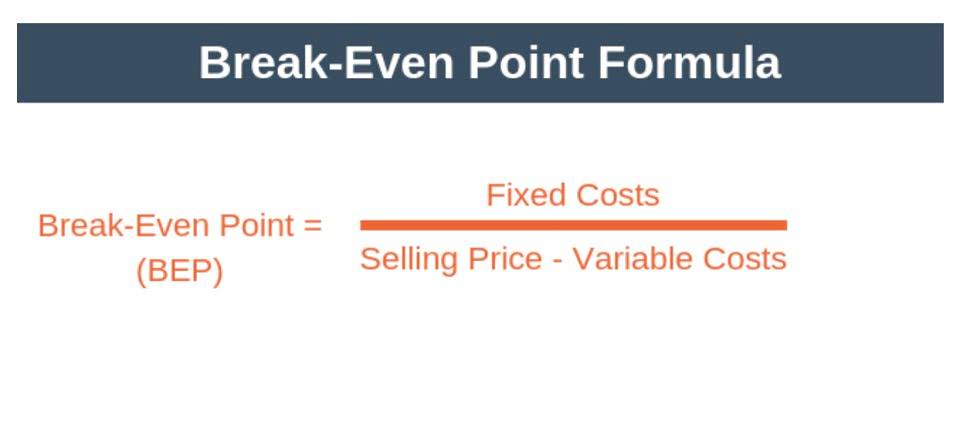
It is important to note that salvage value is an estimation and may not always reflect the actual value realized upon asset disposal. Regularly monitoring and reassessing its estimates can help ensure their accuracy and relevance. The type of asset, its depreciation pattern, and external factors such as changes in regulations or industry trends can also impact the estimation.
- As noted in the guide itself, use Chart 2 (at the bottom of the table) to find the depreciation table for residential rental and nonresidential real property.
- Here’s the annual journal entry for the refrigerator’s depreciation.
- For information on listed property placed in service after 1986, see Pub.
- For example, a company may decide it wants to just scrap a company fleet vehicle for $1,000.
Example of salvage value calculation for a car belonging to a business for after and before tax

Any request for a revocation will be considered a request for a ruling. 3-year property includes automobiles, light-duty trucks (actual unloaded weight less than 13,000 pounds), and tractor units for use over-the-road. Race horses over 2 years old when placed in service are 3-year property. Any other horses over 12 years old when you placed them in service are also included in the 3-year property class. We’re firm believers in the Golden Rule, which is why editorial opinions are ours alone and have not been previously reviewed, approved, or endorsed by included advertisers.
Values Needed to Calculate Depreciation
File the application within the first 180 days of the tax year the change is to become effective. Before 1981, you could use any reasonable method after tax salvage value calculator for every kind of depreciable property. Net salvage is the salvage value of property minus what it costs to remove it when you dispose of it.
Table A-5: 3-, 5-, 7-, 10-, 15-, and 20-Year Property; Mid-Quarter Convention; Placed in Service in Fourth Quarter
These sources will give you valuable insights into the asset’s estimated value. This can include expenses such as delivery fees or installation costs. Consulting with experts or considering alternative valuation methods may be necessary for more complex or specialized assets. Organizations consider this an essential factor when evaluating an asset’s complete worth. By projecting the asset’s remaining value after its functional life has ended, they can more precisely gauge the asset’s cumulative value over its entire period of utility. In the intricate sphere of finance and asset management, the scrap value is not merely a residual figure; it represents the latent potential of an asset nearing the end of its functional journey.

If you selected a 15-year recovery period, you use the percentage (6.667%) from the schedule above. You prorate this percentage for the number of months the property was in service in the first year. If you selected a 35- or 45-year recovery period, you use either Table 11 or 15. The ACRS percentages for low-income housing real property, like the regular 15-year real property percentages, depend on when you placed the property in service.
- Generally, you get no ACRS deduction for the tax year in which you dispose of or retire recovery property, except for 15-, 18-, and 19-year real property.
- Because the conventions are built into the percentage table rates, you only need to know the following.
- Incorporating a robust ERP system like Deskera can significantly enhance how businesses manage and calculate salvage value.
- If, in the first year, you use the property for less than a full year, you must prorate your depreciation deduction for the number of months in use.
- Salvage value is the estimated value of property at the end of its useful life.
- Manufactured homes (including mobile homes) and railroad tank cars are also 10-year property.
Accelerated Cost Recovery System (ACRS)
Companies take into consideration the matching principle when making assumptions for asset depreciation and salvage value. The matching principle is an accrual accounting concept that requires a company to recognize expense in the same period as the related revenues are earned. If a company expects that an asset will contribute to revenue for a long https://www.bookstime.com/ period of time, it will have a long, useful life. Salvage value is the estimated book value of an asset after depreciation is complete, based on what a company expects to receive in exchange for the asset at the end of its useful life. As such, an asset’s estimated salvage value is an important component in the calculation of a depreciation schedule.
Briefly, suppose we’re currently attempting to determine the salvage value of a car, which was purchased four years ago for $100,000. The carrying value of the asset is then reduced by depreciation each year during the useful life assumption. In order words, the salvage value is the remaining value of a fixed asset at the end of its useful life. The salvage value is considered the resale price of an asset at the end of its useful life.